When a review begins by saying: “the game lacks combat-options or depth“, it is generally the first nail in the coffin for action titles, while that often shouldn’t be the case. A mechanic like allowing the player to switch between weapons, abilities or even complete move-sets on the fly has to fit the vision of the game to be work. Thus it needs careful consideration. Games like Bayonetta offer a huge variety of weapon combinations to the player, while others like Killer is Dead only have a single weapon. One can assume the former is better but it goes much further than that.
This article will cover the different ways action games have handled weapon-switching, together with the up-and downsides to each setup and its influences on the game overall. Starting out it is important to note some limitations to keep in mind when considering weapon-switching in games. First off the human human element; most can only store around five to nine actions in their short term memory.
Then there’s the technical side. Modern game-consoles offer only four face-buttons, four shoulder buttons, two control sticks and a d-pad with older controllers sometimes offering even less options. Secondly, older games couldn’t load too many pieces at the same time like in the original build of Devil May Cry 1. Here protagonist Dante couldn’t fire his guns and wield his sword at the same time due to memory limitations, forcing players to use a menu to switch. While this was thankfully fixed in the final release other weapons still had to be switched to via a long animation or menu. This is important to note as these progenitors, held back by these technical limitations, were highly influential games.
With those disclaimers out of the way we can take a look at the most common ways switching between weapons and abilities is done. Note that some generalization is present here but most games will fall in these categories. While switching is often done between weapons, abilities, stances and more, we’ll call it weapon-switching for the duration of the article.
ALL IN
Allows the player to switch between weapons fluidly, combo-ing from one to the next
(notable games: Devil May Cry 4 & V, DmC Devil May Cry, Vanquish)
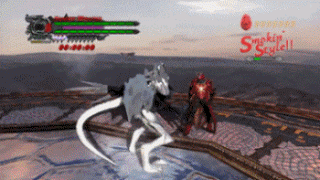 In this format the player can switch between weapons on command, even mid-animation. In Devil May Cry 4 for instance, Dante can switch between three weapons, three firearms and five fighting styles on the fly. The player has to memorize which weapon is next in line but also press the button to switch and make sure his muscle memory doesn’t input commands for one weapon while he’s already at the next one. This gives the player a lot of combat-options at any given time, offering a great deal of creativity and complexity. But it also demands hand-eye coordination and memorization, resulting in a very high skill ceiling, at least in terms of inputs.
In this format the player can switch between weapons on command, even mid-animation. In Devil May Cry 4 for instance, Dante can switch between three weapons, three firearms and five fighting styles on the fly. The player has to memorize which weapon is next in line but also press the button to switch and make sure his muscle memory doesn’t input commands for one weapon while he’s already at the next one. This gives the player a lot of combat-options at any given time, offering a great deal of creativity and complexity. But it also demands hand-eye coordination and memorization, resulting in a very high skill ceiling, at least in terms of inputs.
From the combat-designers perspective this allows for a certainty: the player always has access to the whole arsenal. This way they can design encounters around a specific weapon or setup as the player always has it as his disposal, ironically making the game less open in its combat. Examples can be found in the Blitz enemy from Devil May Cry 4 which is only vulnerable to ranged attacks (with some exceptions) or a Blood Rage in DmC: Devil May Cry which could only be damaged by fire weapons. These enemies with rough restrictions are then complimented by foes that are weak to all forms of attack, putting the near-infinite combat freedom on display.
As a result though weapons are slightly deprived of their uniqueness, as the combat revolves more around the character and how his weapons work together, than the weapon he wields. One will never form a bond with Rebellion in Devil May Cry 4 like they do with their Dragon Sword in Ninja Gaiden, because it’s just part of a bigger and more vast move-set across different weapons. On the flip side this type of design lacks the menu usage, making it stylisher to look at but also a smoother gameplay experience.
Thus this method is a strong fit for a game that: wants their players to be stylish and experimental, needs a high skill ceiling, wishes to avoid menu usage, thrives to test the system to its limits and doesn’t mind a combo-video or two.
SWITCH UP
Lets the player switch setup during gameplay, but with a slight delay.
(notable games: Nioh, Souls-series, Ninja Gaiden II, Metal Gear Rising: Revengeance, God of War)
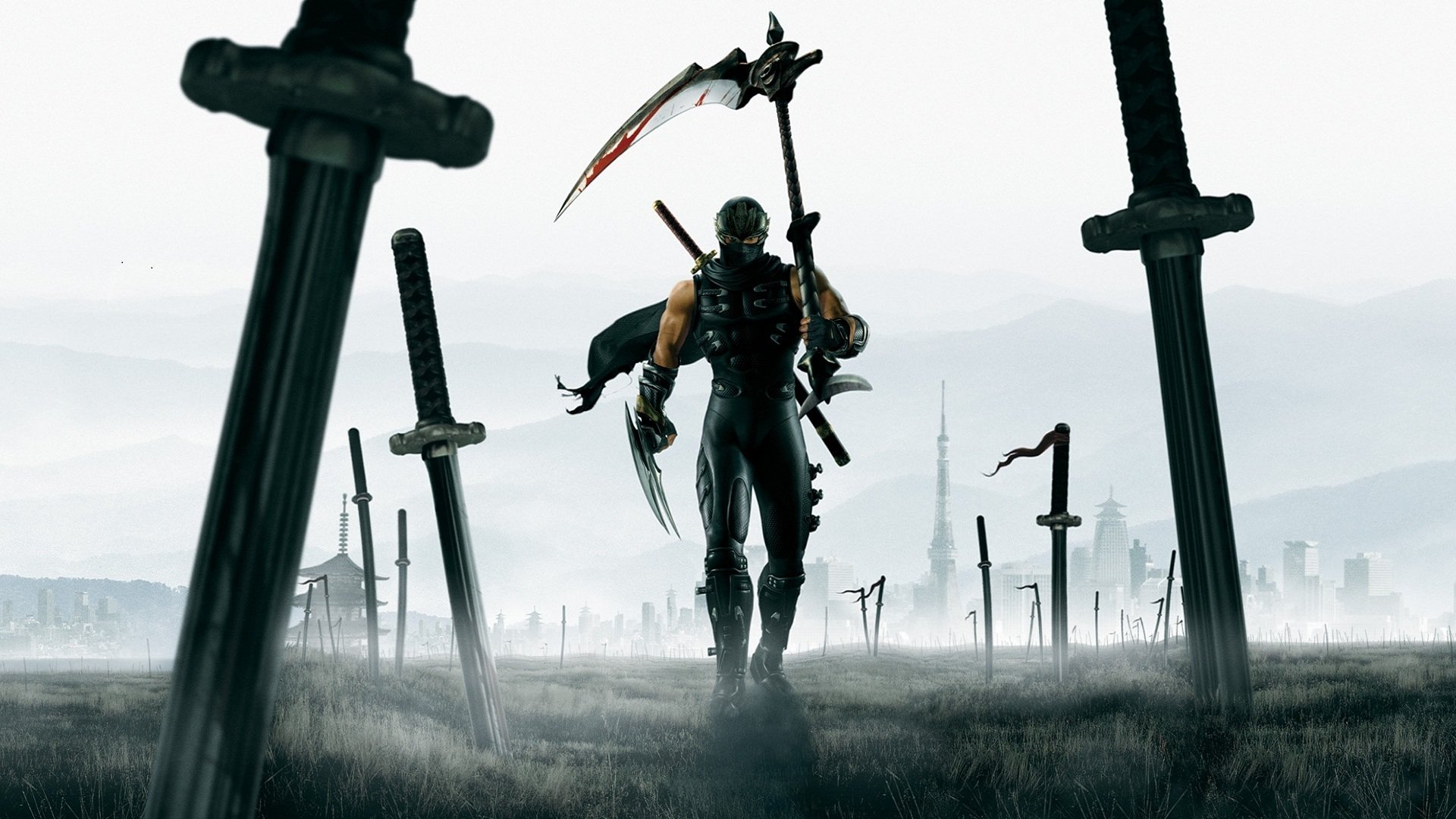
These games offer a slightly altered version of that on offer in the “All in” setup. Players carry all their weapons with them but switching between them is done in a stilted way. In Nioh protagonist William can attack foes with his spear and at the end of his combo pull out his katana with a strong finishing slash that ends the combo and switches his weapon, after which he is slightly halted. Other ways are seen in Ninja Gaiden II in which switching weapons can only be done via a quick-menu when Ryu isn’t attacking.
Games from the Souls series offer a similar approach in that one can use as little as two weapons to one-hundred if they don’t mind some menu switching during combat. But the character’s offensive comes to a full stop in between, disallowing combos. This system allows players to have all their weapons available to them while still urging them to play favorites.
From a design perspective each foe has to be beatable with any weapon as the designers should want to avoid forcing the player to pause the game to switch his setup, but it can design certain foes to be weak against certain weapons and strong against others to promote variation or reward a player for using a certain weapon. It can be stated that this method is a good fit for a game that want the player to dedicate to one weapon, but also wishes to offer variety for subsequent replays while keeping an emphasis on style at arm’s length.
PAUSE SWITCH
Switching is done in a menu that pauses the game.
(notable games: Devil May Cry 1, Ninja Gaiden Black, God Hand)
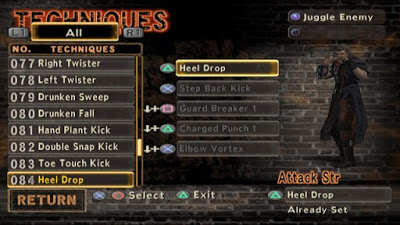 This methodology is born out of technical limitations as these games couldn’t load more than one weapon at a time. Thus they had to use menus where players could switch between weapons, allowing the game to load their assets and abilities. Because there’s a lot of menu switching involved players are more likely to find one setup and stick with it. But once they are stuck at a certain fight they will never feel like they are out of options. Boss Elvis giving you trouble in God Hand, enter the menu and try a different setup. Dynamo in Ninja Gaiden Black shooting you up too much? Try a Smoke Bomb instead of a Shuriken. It forces players to be efficient and dedicate themselves, but also allows them to strategize. This method works nicely with a game that wants the player to have many options, but focus on one. Sadly this method is an artifact of its time and will probably be forever replaced by ones mentioned throughout this article like “Switch up“.
This methodology is born out of technical limitations as these games couldn’t load more than one weapon at a time. Thus they had to use menus where players could switch between weapons, allowing the game to load their assets and abilities. Because there’s a lot of menu switching involved players are more likely to find one setup and stick with it. But once they are stuck at a certain fight they will never feel like they are out of options. Boss Elvis giving you trouble in God Hand, enter the menu and try a different setup. Dynamo in Ninja Gaiden Black shooting you up too much? Try a Smoke Bomb instead of a Shuriken. It forces players to be efficient and dedicate themselves, but also allows them to strategize. This method works nicely with a game that wants the player to have many options, but focus on one. Sadly this method is an artifact of its time and will probably be forever replaced by ones mentioned throughout this article like “Switch up“.
BOTH WORLDS
Allows fluid weapon-switching, but the selection of the switchable weapons are selected in a pause-menu.
(notable games: Bayonetta 1 & 2, Nier: Automata)
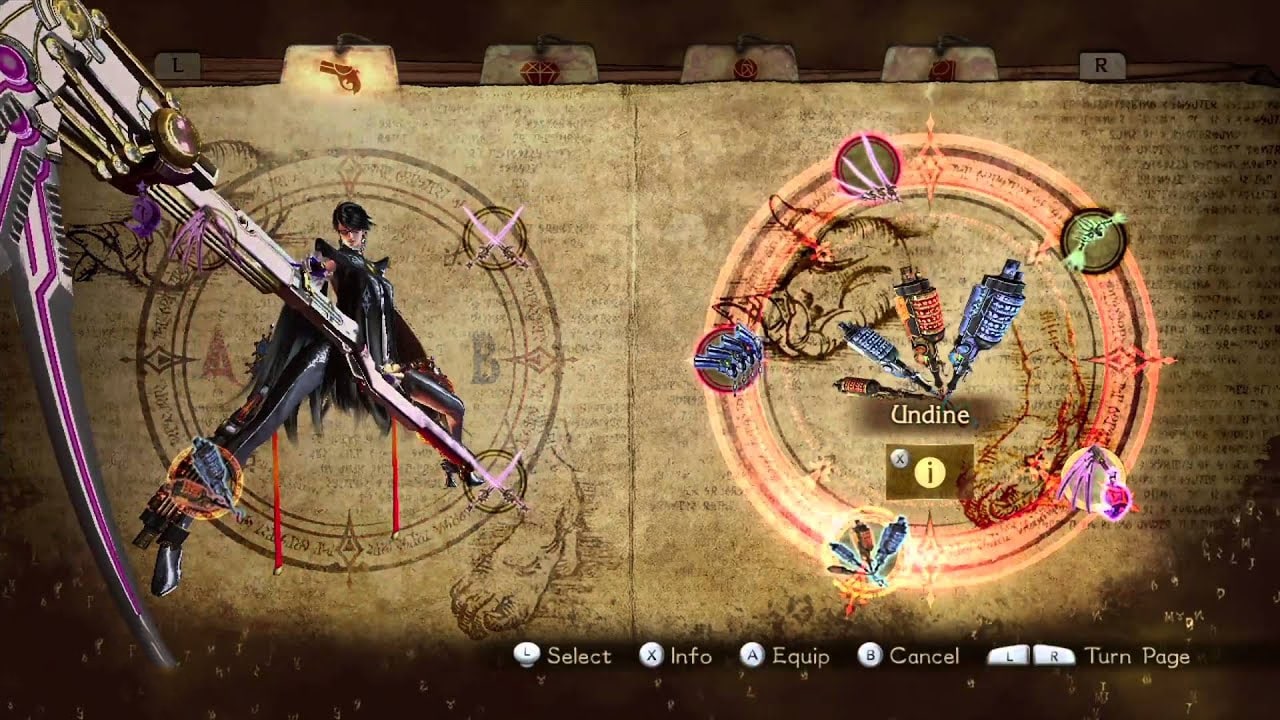
Seen in titles like Bayonetta, this option allows for the largest variety of combat options with over twenty weapon combinations being available in its sequel. Such a huge amount of choice can never be mapped to a few buttons and thus requires a menu. In the menu they can then equip a selection of four weapons that can be swapped between using the shoulder buttons. It is an option born out of necessity. The sheer amount of combinations present can very easily overwhelm new players and as a result see them stick with safe options throughout the game. On the flip side, experienced players will quickly find an overpowered combination as it’s impossible for the developers to fully check, test and balance each combination against each enemy-type. So while offering tons of creativity the game is also hampered by it. And while an emphasis on style might change this and force the player to vary his setups more, the fact that this change has to be done in a menu makes it far less stylish than for instance the “All in” method present in games like Devil May Cry 4.
This method is also an artifact of time and one that will, probably, disappear once newer mechanics or ways of changing setups are introduced. But it aims to offer the highest number of options available to offer infinite freedom and creativity which is more than commendable. Recently Devil May Cry V‘s Dante showed a nice mixture, allowing players to choose how many weapons players want to bring into a mission. They can just bring one, two or eight, with the latter requiring a lot of shoulder-button presses to get to the weapon you want.
PREPARATION
Allows the player to select his setup at the start of a mission or at a checkpoint.
(notable games: Devil May Cry 3)
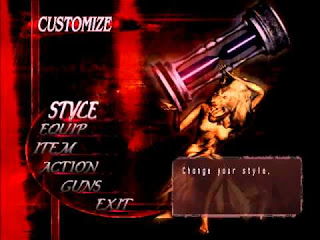
A setup that’s more of a compromise of the one seen in Bayonetta, this one allows the player to bring a certain setup into the level but it cannot be switched at will. Devil May Cry 3 is the most famous example of this allowing the player to choose a fighting style, two melee weapons and two firearms to bring into the mission. To switch between those he can press a button, allowing for stylish options. But he can only change his selection at a checkpoint or at the start of a new mission. This offers a degree of preference and strategy while also forcing the designers to have all enemies be beatable with every setup… a balancing nightmare. In exchange some setups can be designed so that they’ll make certain fights harder and others easier. The “Trickster” fighting style won’t do you much good against the Vergil boss-fight but it’ll do wonders against the Arachnid. This system by default adds a lot of replay value and experimentation to those who like these sort of things, as there’s a plethora of setups to explore per mission. At first one can design the game so that each level has a clear best setup to use, but eventually it can blur the lines offering one set of enemies that is weak to one setup but end the mission with a boss that is strong against that setup. Forcing the player to make choices.
A downside to this mechanic is that it’s easy to find a favorite and learn how to deal with its weaknesses and forget the other available options. In Devil May Cry 3 many players use a Rebellion/Beowulf combo with Ebony/Spiral and the “Swordmaster” fighting style and master its usage across all encounters. Furthermore the player will often wonder what the combat would be like if he could switch styles or weapons on the fly, which was eventually modded into Devil May Cry 3 and gave the combat much more variety and emphasis on style as a result but removed the strategy element. This way of weapon-switching works best with a game that that rewards knowledge, experimentation but also a combination of efficiency and style.
TRICK OR TREAT
Multiple weapons are combined together and can transform into one-another.
(notable games: Bloodborne, Devil May Cry V)

Some games like to give weapon switching a more distinct feature. For instance in Bloodborne which sees its hunters wield tools that can transform into another at the flick of a button, even mid-attack. This system allows players to quickly swap between two designated weapons without too much finger-gymnastics, while also sporting a clear visual transition between the weapons with an in-game animation. Some games are built around it, like Bloodborne, while others like Devil May Cry V feature it in some of its weapons. In it King Cerberus and Balrog can switch forms either with a push of a button or they automatically change depending on which attack you do.
BULLET-TIME
Slows the game down and allows the player to select his weapon in a selection-wheel.
(notable games: The Witcher 3, Mass Effect 2, Doom 2016, The Evil Within)
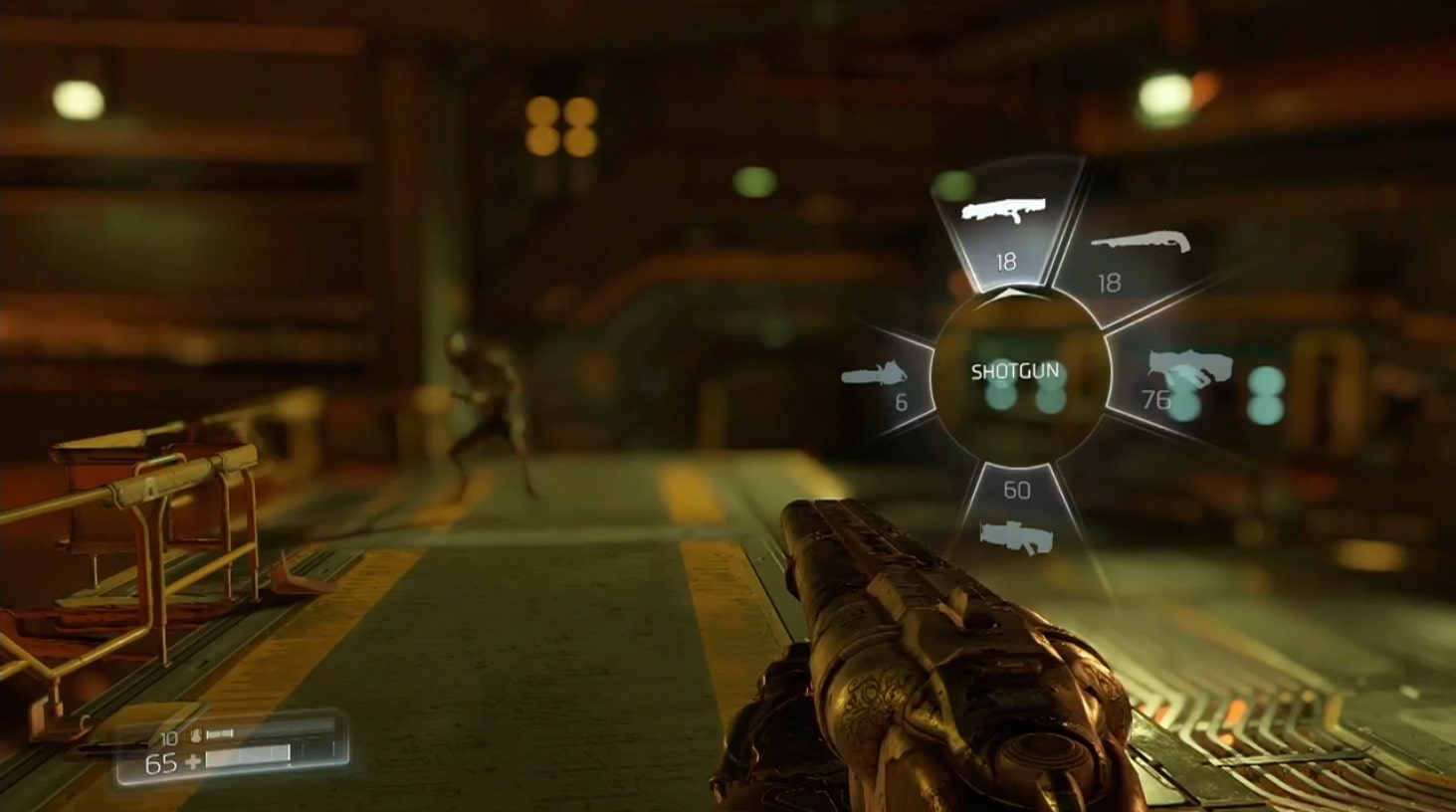
Pressing a single button in the The Witcher 3 opens a radial menu that slows the gameplay down significantly. This allows players to assess the situation and carefully select their weapon of choice, giving players access to a wider selection of options while keeping the button-layout free from clutter. This system is currently mostly used for console versions of PC titles, to compensate for lack of buttons on controllers compared to a mouse and keyboard.
This system does pose some problems to the movement of the character however. If he is already moving while the wheel is opened and he then closes it, it will often result in the character coming to a full-stop. Or when he changes the camera while in the menu the character’s running direction might change when it is closed. Often times these menus also take up nearly the whole screen, hampering your overview on the battle. This makes it fit best with a game that wishes to offer multiple combat-options while avoiding clutter in both button-layout and menu-usage. Down the line the technology behind this setup will need improving regarding its impact on character movement.
ONE MAN ARMY
No switching is done, the character has all his abilities available to him at all times.
(notable games: Killer is Dead, Rising Zan: Samurai Gunman, Ninja Gaiden 3, Devil May Cry 4)
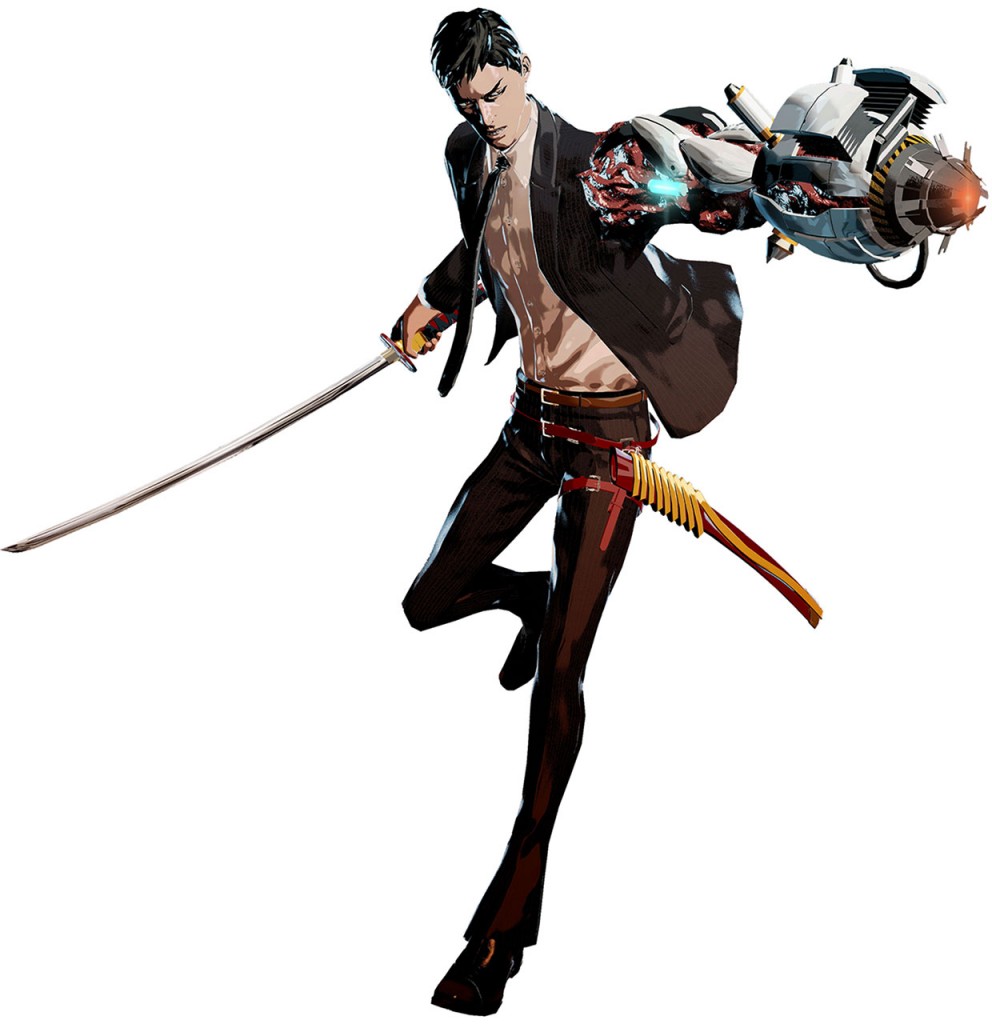 Completely on the other side of the spectrum lies a game that gives the player one load-out and sticks with it. While these games are often criticized for their lack of variety this is usually only on a surface level. Games like Killer is Dead are able to balance the game perfectly around protagonist Mondo’s weapons the Moonlight and Muscleback. The player will also get to know their abilities intimately and how to deal with each and every foe. It also removes a lot of clutter from the game; forcing the player to rely less on his plethora of options but more on his own skills at the mechanics at play. If a player is stuck in Demon’s Souls, he can switch to magic. Or when Vergil is running amok in Devil May Cry 3, a forum-user can recommend you use Beowulf’s “Killer Bee” attack. But if you’re stuck in Rising Zan, only your own skillset can save you. This methodology of design does eye bad when it’s done in a sequel however. If a game has promoted variation in the past but takes it away in a sequel it can appear jarring, as was the case in Ninja Gaiden 3. But considering this game tried to focus more on the one character and his relationship with his weapon, it a at least a considered choice. Just not one taken for granted.
Completely on the other side of the spectrum lies a game that gives the player one load-out and sticks with it. While these games are often criticized for their lack of variety this is usually only on a surface level. Games like Killer is Dead are able to balance the game perfectly around protagonist Mondo’s weapons the Moonlight and Muscleback. The player will also get to know their abilities intimately and how to deal with each and every foe. It also removes a lot of clutter from the game; forcing the player to rely less on his plethora of options but more on his own skills at the mechanics at play. If a player is stuck in Demon’s Souls, he can switch to magic. Or when Vergil is running amok in Devil May Cry 3, a forum-user can recommend you use Beowulf’s “Killer Bee” attack. But if you’re stuck in Rising Zan, only your own skillset can save you. This methodology of design does eye bad when it’s done in a sequel however. If a game has promoted variation in the past but takes it away in a sequel it can appear jarring, as was the case in Ninja Gaiden 3. But considering this game tried to focus more on the one character and his relationship with his weapon, it a at least a considered choice. Just not one taken for granted.
This method is the best fit for a game that wants a core experience without too much clutter, focused on one single character. It also allows for the best level of balance and difficulty curve as there are far less variables to take into account when designing a game.
With all the above taken in one can reach one conclusion: there is no perfect way to handle the switching or to do it at all. Armed with the data listed in this article one may even state that many games are using the wrong system. Ninja Gaiden might be better of using the “Preperation” system as it focuses more on efficiency and tactics, while its current system doesn’t. Devil May Cry 3‘s system, while fantastic, would be a way better fit with the “All in” setup as seen in Devil May Cry 4. Meanwhile Bayonetta might be able to switch between its dozen weapon setups in a weapon wheel, for instance allowing players to open the menu during her time-slowing “Witch-Time” ability to quickly switch kit. Enfin, endless possibilities await. Every system is a mechanic that should be considered based on whether or not it fits the vision of the game’s combat best. Like how Ninja Gaiden isn’t about style, but wishes to focus on efficiency, so an on the fly weapon-switch system has no home there. Quantity in available combat options should never persevere over its quality.
So the next time you read a review saying that “the combat lack variety”, consider that it might be the best fit for the game and try it before passing judgment.
鑒 reflection style 鑒
In this short section I reflect on the article from my own viewpoints as a gamer and lover of the genre instead of a critic.
This piece was inspired by a conversation I had with fellow action-game enthusiast Birdman on how each game in this genre seems to be pulling towards the same design philosophy: variety is quality and complexity is king. Games like Killer is Dead were panned for it using only one weapon setup and my personal favorite Metal Gear Rising: Revengeance bashed for not allowing weapon switching mid-combo. I wanted to analyze each system where their place was. If one were to ask me which system I prefer it would be the one used in Devil May Cry 3, which was dubbed “Preperation” in this article. Though I don’t feel it’s the perfect fit for the game itself it does offer the best balance between strategy and style; allowing one to strategize which setup to bring into the mission while still styling with weapon switching during combat. I would love to see it be featured in Ninja Gaiden 4 if it were to ever see the light of day.
斬 postscript notes 斬
- Games such as The Wonderful 101 and God of War deserve a mention too, but there were better examples in place to explain the systems discussed;
- This article was updated and re-published for the new site design;
- While researching for this piece I was a tad surprised (and also not surprised) to find that there isn’t an action-game for the PC that uses all 104 keyboard buttons. While impossible to control it would probably be a dream game for combo-video enthusiasts. Make it happen Itsuno;
- I specifically bought Rising Zan: The Samurai Gunman (Playstation 1) for this article to see how it influenced the genre and its systems. You can read more about that game here;
- In my research I was surprised to see how little a weapon-wheel is used in the genre itself, perhaps due to its lack of precision in stressful situations. Though its inclusion in the popular Witcher 3 and Horizon: Zero Dawn might change this in the nearby future;
- I really wished to use Prince of Persia: Warrior Within as an example, but couldn’t find a place. This little ‘action game that could‘ deserves more mention than it gets;
- While at the core of the genre, weapon switching is rarely discussed in interviews, which is a shame. The only mention I could find was in an interview with the designer behind Death’s Gambit for the Playstation 4.

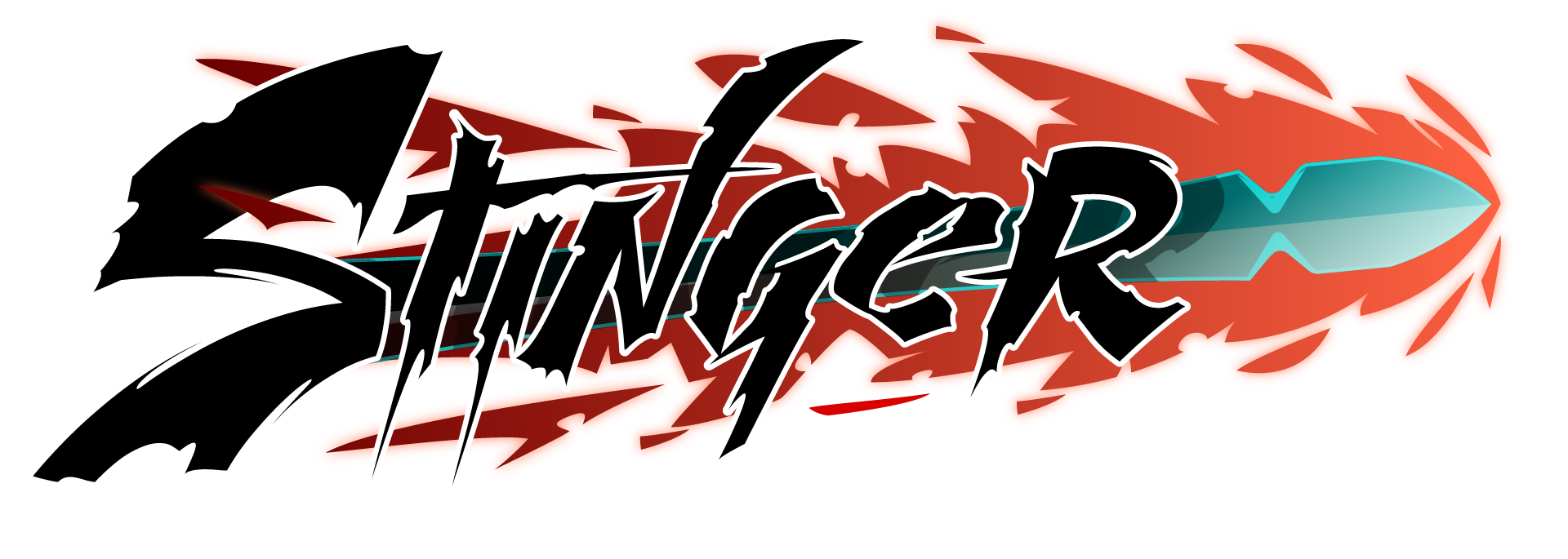
What category would Transformers: Devastation fall under?
I think something like Preparation as in DMC3, you can swap between weapons but you still have to prepare which ones you take with you before you head out. Its RPG mechanics toy around with this a bit too. Granted, I haven’t played this game at the level I tend to for making analyses, so take this with a grain of salt!
Have you played a lot of Transformers: Devastation? Where do you feel it would fall under?
Players can choose their loadouts as you mentioned, as well as switch weapons with the d-pad during gameplay, so I suppose it would be “Preparation” or “Switch Up”.
That sounds fair! It really is a game that’s still on my list of games to really get into. Deep into Astral Chain currently, fantastic title. You playing that one too or planning to?